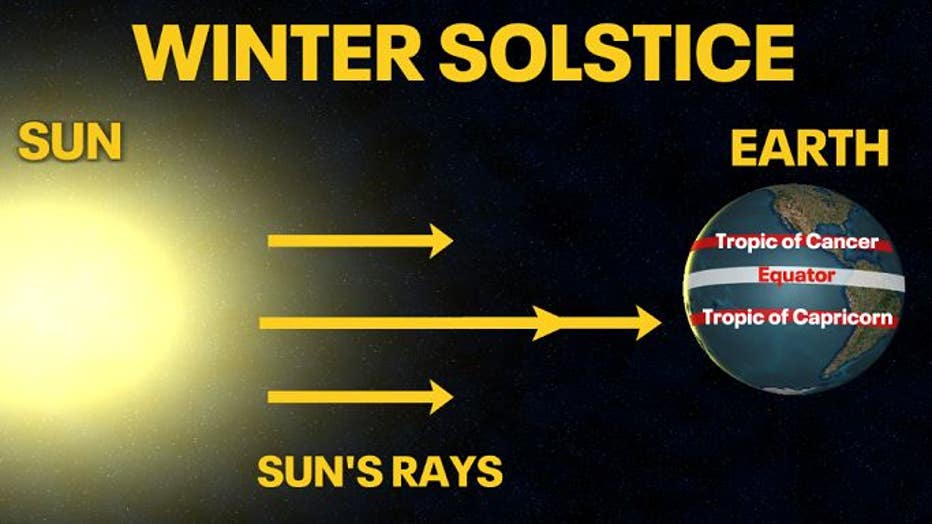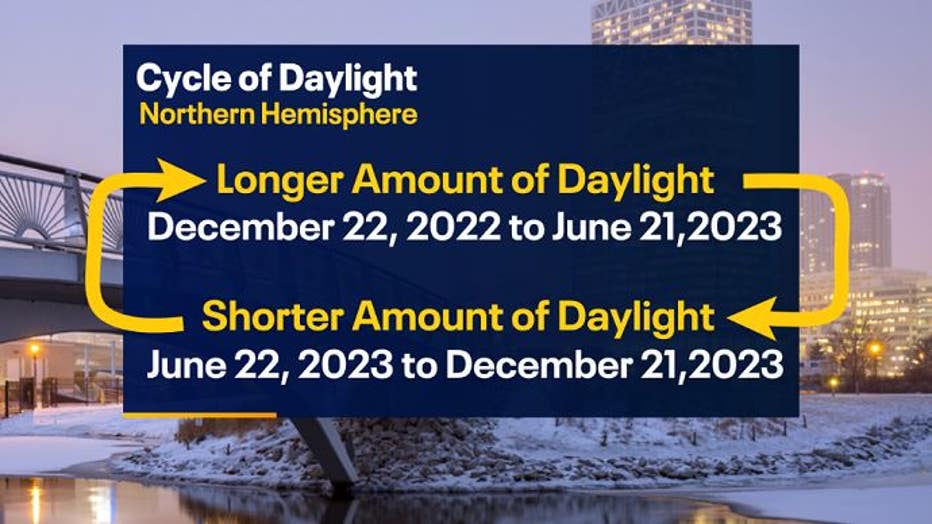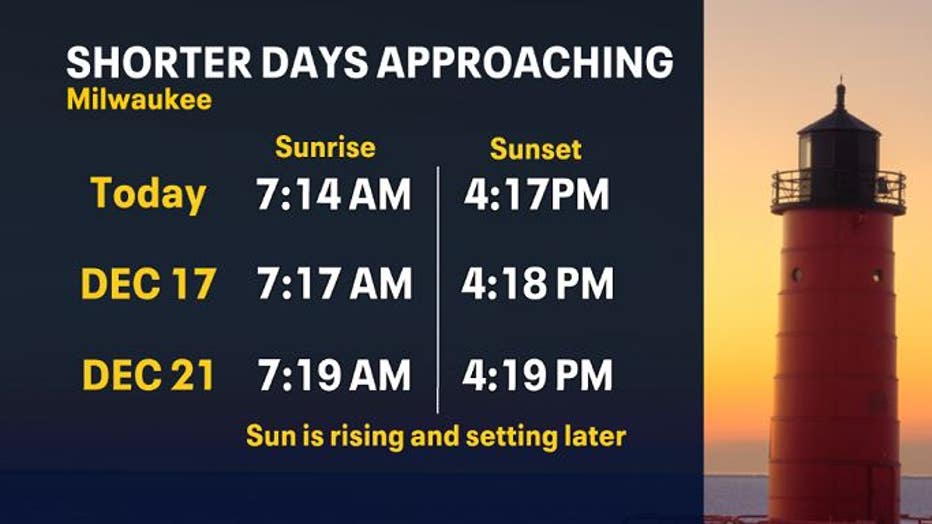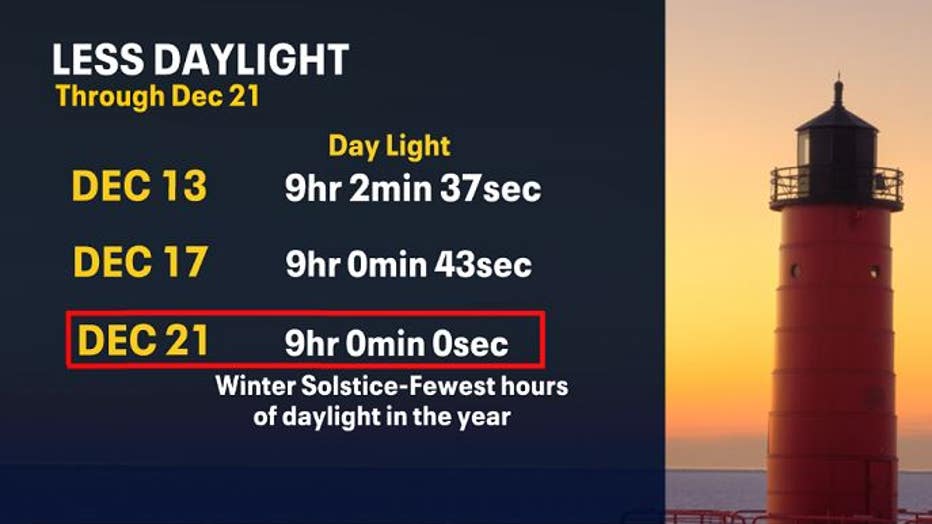Winter solstice arrives Dec. 21; what you need to know

MILWAUKEE - Winter is coming. Dec. 21, 2023 marks the winter solstice, also known as astronomical winter.
The tilt of Earth and the way it travels around the sun is what makes the sun's rays directly line up over different locations on Earth throughout the year.
The summer solstice in the Northern Hemisphere is when the sun's rays are directly above the Tropic of Cancer at 23.5° N latitude. The winter solstice for the Northern Hemisphere is when the sun's rays are directly above the Tropic of Capricorn at 23.5° S latitude. The Tropic of Capricorn is the furthest south the sun's rays will travel in a year.

While this southernmost migration point marks the beginning of winter for the Northern Hemisphere, the Southern Hemisphere experiences summer. The continuous movement of the sun's rays lead to various solstices and equinoxes during the year. This determines whether the amount of daylight is lengthened or shortened every day.

Recall that the winter solstice, on Dec. 21, marks the ‘shortest’ day of the year in terms of daylight. After the ‘shortest’ day, the amount of daylight each day after will be lengthened until the summer solstice arrives on June 21.
SIGN UP TODAY: Get daily headlines, breaking news emails from FOX6 News
After June 21, the days begin to have less daylight again. This leads to having a constant cycle of daylight lengthening and shortening year round.

When the sun's rays move south prior to the end of December, areas north of the equator experience later sunrises and sunsets. This has lead to shortening days for Milwaukee after June 21.
FREE DOWNLOAD: Get breaking news alerts in the FOX6 News app for iOS or Android

So, with the winter solstice arriving soon, it will mark the one day in the year with the fewest hours of daylight, 9 hours to be exact, on Dec. 21. On the bright side, days with longer periods of daylight are just on the horizon.

